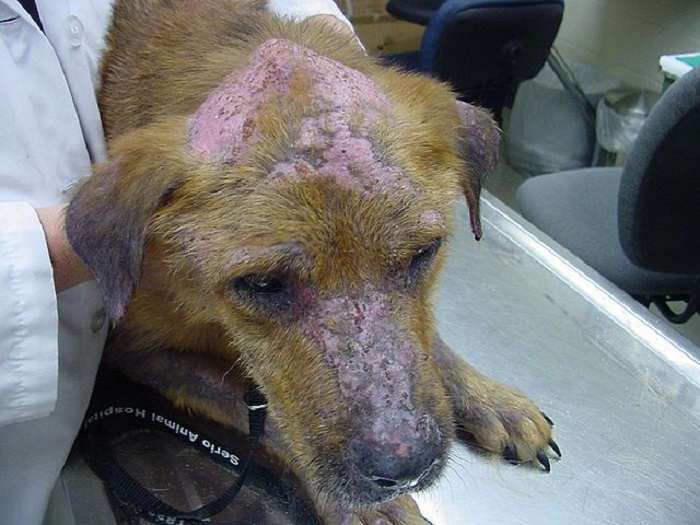When it comes to our beloved furry friends, their health is always a top priority. One aspect of their well-being that often goes overlooked is their skin health. Just like humans, dogs can suffer from various skin conditions that can cause discomfort and distress. Understanding these skin diseases is crucial for early detection and appropriate treatment. In this comprehensive guide, we will explore the different types of dog skin diseases, complete with pictures to aid in identification.
Allergic Dermatitis

Allergic dermatitis is one of the most common skin conditions in dogs. It occurs when a dog’s immune system overreacts to allergens in their environment. Common allergens include pollen, dust mites, and certain foods. Symptoms of allergic dermatitis include:
- Itching
- Redness
- Inflammation
- Hair loss
- Skin infections
Flea Allergy Dermatitis
Flea allergy dermatitis is a specific type of allergic reaction to flea bites. Even a single flea bite can trigger an intense allergic response in sensitive dogs. Symptoms of flea allergy dermatitis include:
- Severe itching
- Redness
- Skin lesions
- Hair loss, especially around the base of the tail and hindquarters
- Secondary skin infections
Mange
Mange is a skin condition caused by mites, microscopic parasites that can infest a dog’s skin and hair follicles. There are two main types of mange in dogs: sarcoptic mange and demodectic mange.
- Sarcoptic mange (also known as scabies) is highly contagious and causes intense itching, redness, and crusty lesions.
- Demodectic mange is caused by an overgrowth of demodex mites and typically affects young dogs with weak immune systems. It leads to hair loss, scaly skin, and sometimes secondary bacterial infections.
Hot Spots (Acute Moist Dermatitis)

Hot spots, also known as acute moist dermatitis, are painful, inflamed areas of skin that often occur due to self-trauma. They can develop rapidly and are commonly found in areas where moisture accumulates, such as the neck, hips, and limbs. Hot spots are often caused by:
- Allergies
- Insect bites
- Poor grooming habits
- Underlying skin infections
Pyoderma
Pyoderma is a bacterial skin infection that can affect dogs of all ages and breeds. It occurs when bacteria penetrate the skin’s natural defenses, leading to inflammation, pus-filled lesions, and hair loss. Common causes of pyoderma include:
- Moisture accumulation
- Skin trauma
- Allergies
- Underlying health conditions
Ringworm
Despite its name, ringworm is not caused by a worm but rather by a fungus. It is highly contagious and can spread between dogs and other animals, as well as humans. Ringworm infections typically result in circular lesions with a red outer ring and a clear center. Other symptoms include:
- Itching
- Crusty or scaly skin
- Hair loss
- Inflammation
Seborrhea
Seborrhea is a skin condition characterized by excessive production of sebum, a natural oil produced by the skin. There are two types of seborrhea in dogs: oily (seborrhea oleosa) and dry (seborrhea sicca). Symptoms of seborrhea include:
- Greasy or flaky skin
- Odor
- Itching
- Hair loss
Understanding the various types of skin diseases that can affect dogs is essential for their overall health and well-being. By familiarizing yourself with the symptoms and pictures provided in this guide, you can be better equipped to identify potential skin issues in your furry companion and seek appropriate veterinary care. Remember, early detection and treatment are key to managing these conditions and ensuring your dog leads a happy, healthy life.


